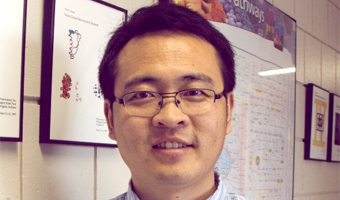Ohio University’s Chemistry & Biochemistry Colloquium Series presents Dr. LiangLiang Sun on “Deep and High Sensitive Top-down Proteomics using Capillary Zone Electrophoresis-Tandem Mass Spectrometry” on Monday, Apr1l 16, at 4:10 p.m. in Clippinger Laboratories 194.

Dr. Liangliang Sun
Sun is Assistant Professor in the Department of Chemistry at Michigan State University.
The host is: Dr. Hao Chen
Abstract: Top-down proteomics aims to characterize all proteoforms in cells.[1] The number of proteoforms in human proteome has been estimated to be over 1 million.[2] High-resolution liquid-phase separation of proteoforms prior to tandem mass spectrometry (MS/MS) is imperative. The top-down proteomics community has made tremendous effort in boosting the separation of proteoforms using liquid chromatography (LC). The state-of-the-art LC-MS/MS platforms have approached 3 000-5 000 proteoform identifications (IDs) from mammalian cells.[3-5] However, the number is still far away from the complete human proteome. Better proteoform separation is crucial to improve the proteome coverage.
Capillary zone electrophoresis (CZE)-MS/MS has been recognized as a useful tool for top-down proteomics over 20 years ago.[6] CZE-MS can approach highly efficient separation of intact proteins and has shown obviously higher sensitivity than LC-MS for detection of intact proteins.[7] However, the low sample loading capacity and narrow separation window of CZE has impeded its wide application for deep top-down proteomics. In my talk, I will talk about some progress my group has made recently in boosting the sample loading capacity and separation window of CZE for deep top-down proteomics. [8-10] For example, we recently have approached a 1-μL sample loading capacity and a 90-min separation window using CZE-MS for top-down characterization of the E.coli proteome, thus leading to 600 proteoform IDs in a single CZE-MS/MS run. [8] The number of proteoform IDs is over three times higher than that in previous single-shot CZE-MS/MS studies.



















Comments